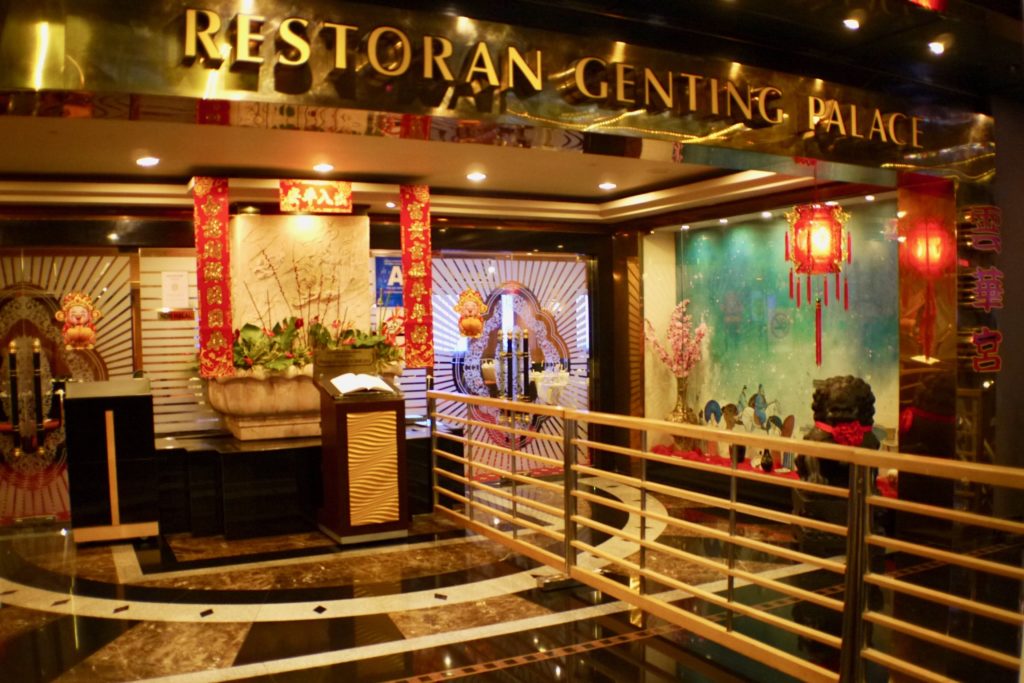
Situated on the second floor of the Genting Grand Hotel is one of Resort World Genting’s most prized possession, the iconic Genting Palace (雲華宮), serving authentic Cantonese cuisine restaurant. As one of the oldest standing restaurants in Genting Highlands, you can trust in time and tradition that they not only know how to make authentic dishes, but make them well. For the lunar new year of 2017, they have prepared some of the most opulent dishes you can find including their exquisite Yee Sang and pineapple tarts.
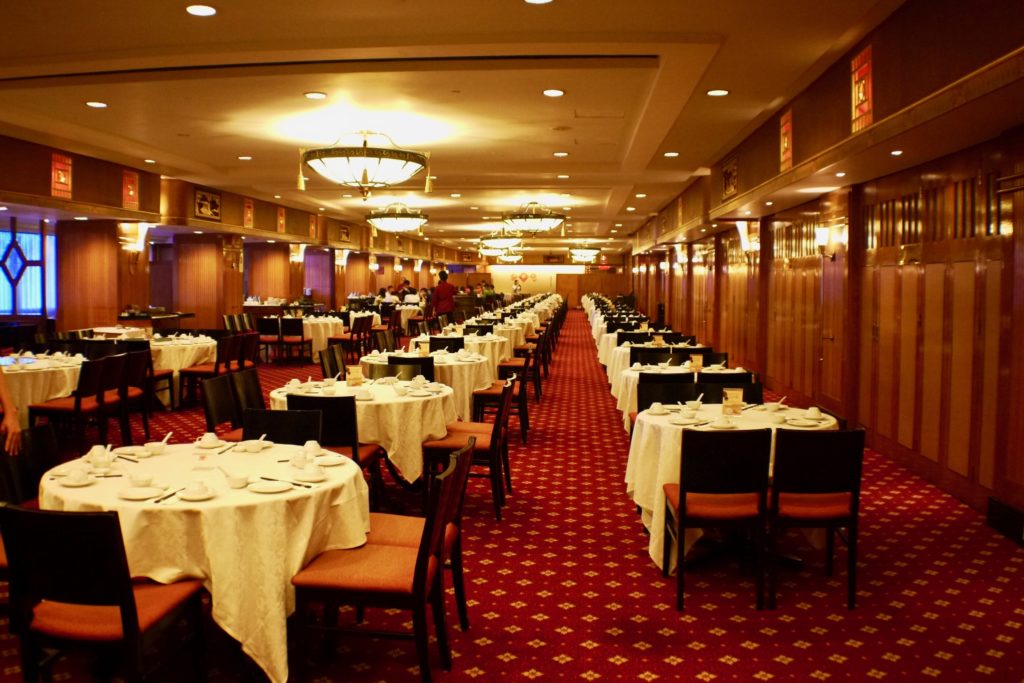
As one of the oldest restaurants in Genting Highlands, they keep to a very simple Cantonese aesthetic. The floors are carpet lined with wooden fixtures throughout the restaurant. The entire restaurants is reminiscent of a typical Chinese eatery that you would find in Hong Kong in the 90’s with its Chinese fine dining style, with round tables and pristine white table cloths.
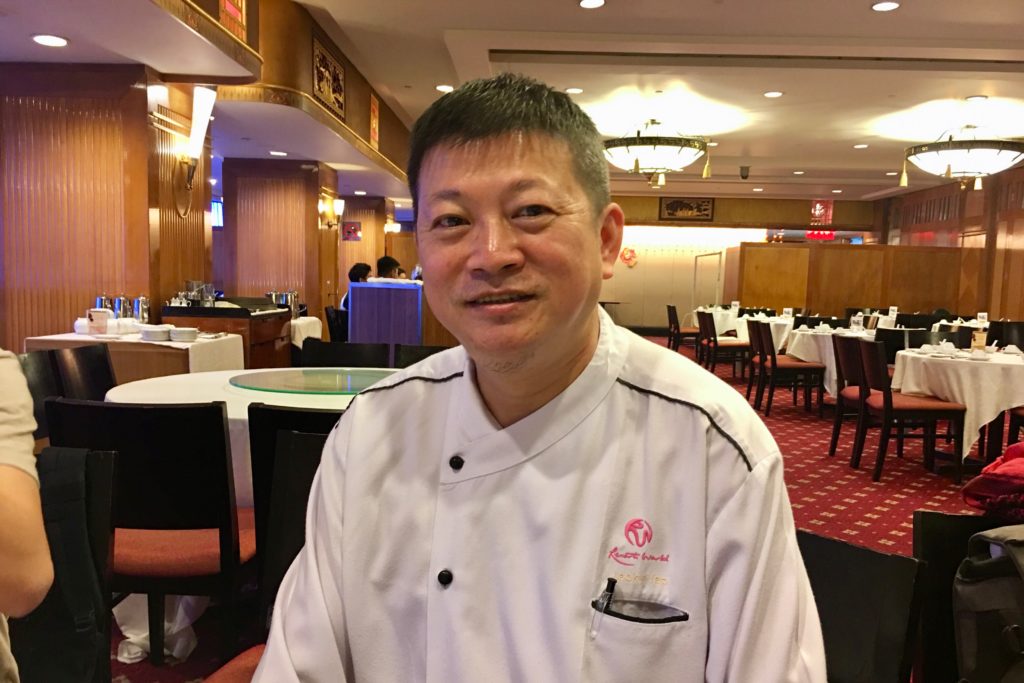
Genting Palace is headed by Executive Chef Jacky Yap, who crafted this 2017 Genting Palace Chinese New Year menu. When asked about his Chinese New Year menu for 2017, he stated: –
“Our menu this time is based on traditional Cantonese flavours. We cater to returning customers most of the time, so they are quite familiar with our style of cooking. Our yee sang this time offers Japanese tuna and our pineapple tarts are all made by ourselves. ” — Jacky Yap, Executive Chef of Genting Palace.
The Dining
As with the traditional Chinese New Year reunion dinner tradition, the dishes are served course by course, starting with appetisers, soup, meat, fish (a must), ending with prawns, rice and desserts. The new year menu at Genting Palace does not spare on expenses, as the quality of ingredients are definitely there, from the use of abalone to river goby as its main fish course.
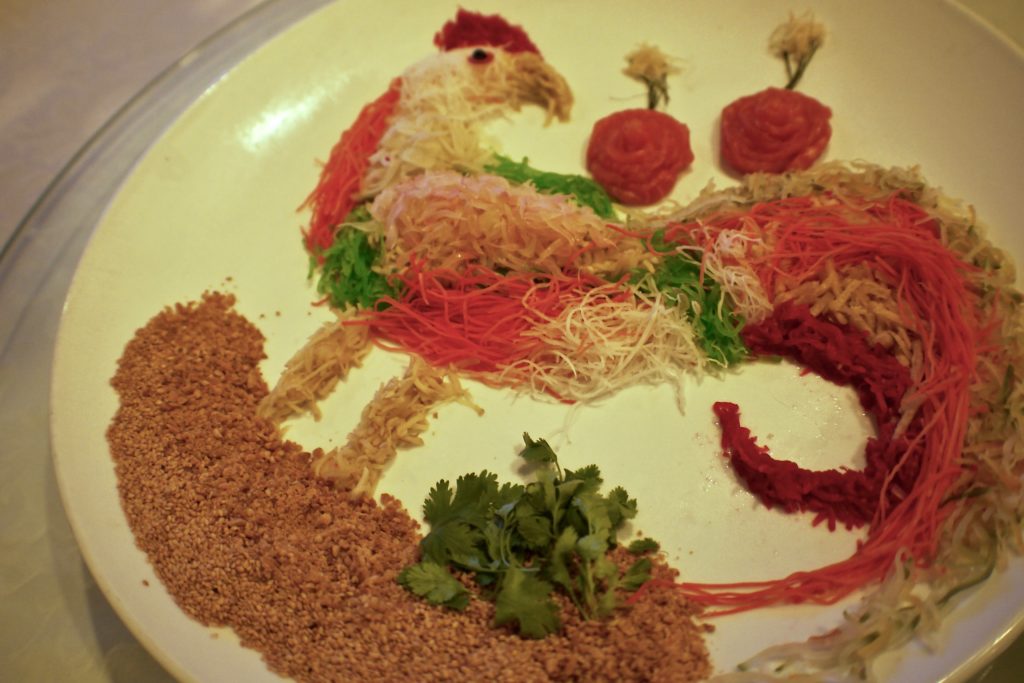
The first dish, an appetiser, was the Prosperous Japanese Tuna Yee Sang 一本萬利金昌魚生. Yee Sang is served at every Malaysian and Singaporean Chinese household during the Chinese New Year, and when repeatedly said, is a a homonym for good business. The Japanese tuna served had a nice fat ratio, making it quite delicate on the tongue. The mixture of ingredients with the right portion of pickled to fresh vegetables were decent, and the plum sauce was not overtly sweet. This is one of the better yee sang you can find actually, with a good mix of everything without it being overwhelmingly sweet. Highly recommended.
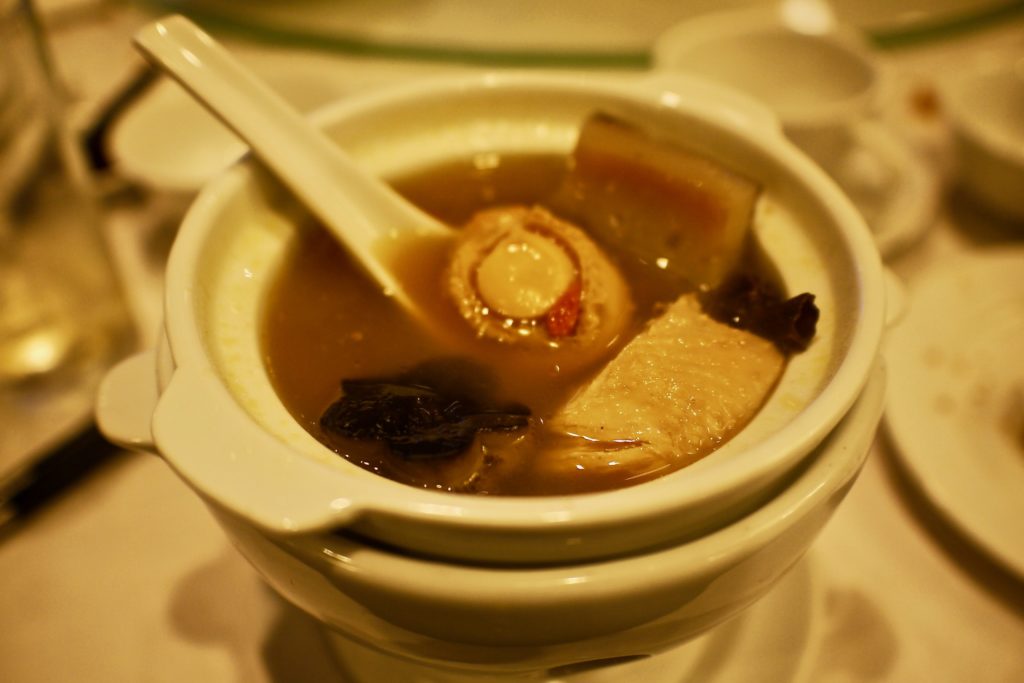
The second dish, a soup, was the Double Boiled Dried Seafood Abalone Treasure Pottage 濃湯鮑魚海中寶. This soup was probably one of the best highlights of the dishes, clean and light. The soup consisted of chicken, dried scallops, a very beautifully crafted shitake mushroom in the shape of a flower, beef tendons and a succulent whole abalone. The soup has a very clean flavour, with briny sweetness from the seafood and fruity sweetness from vegetables.

The third dish, a chicken course, was the Marinated Royal Mountain Chicken in Fine Soy Sauce 古法鼓油皇馬草雞. The chicken dish had a nice salty and savoury flavour to it, as premium, or first draw, soy sauce has a more delicate but stronger flavour to it. The dish was a little on the heavy side, but overall cooked perfectly where the breast meat was perfectly tender.
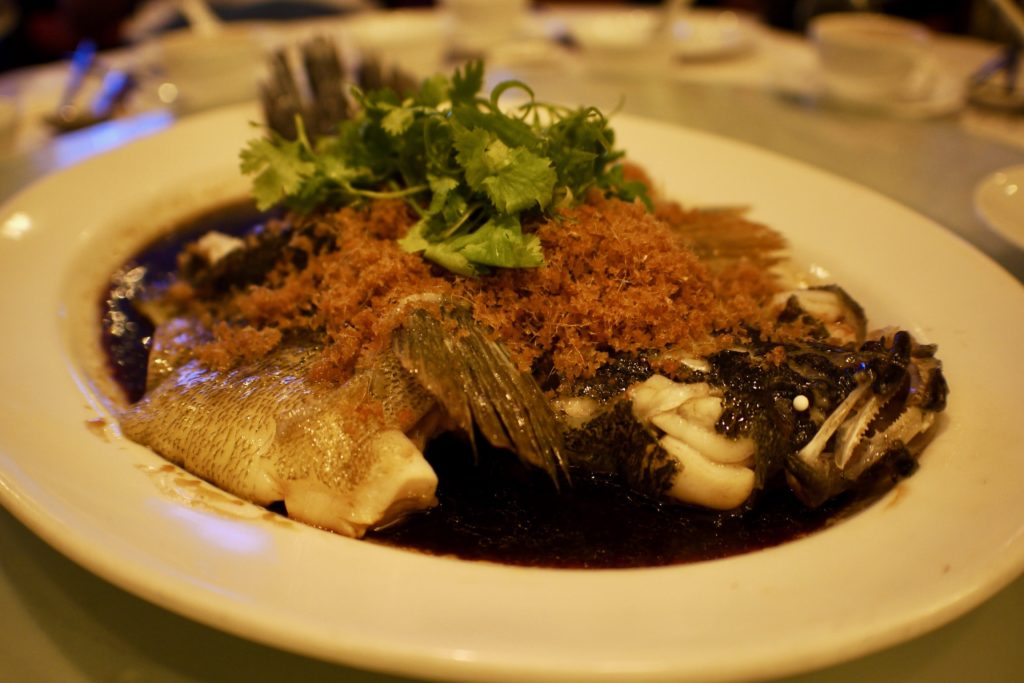
The fourth dish, a fish course, was the Steamed River Marble Goby with Crispy Ginger 脆姜蒸河筍殼魚. The river goby, also known as seon hok jyu, is highly prized in Cantonese cooking. Known for its tender and springy meat, this river delicacy was steam and drenched with soy sauce and crispy ginger bits. The ginger was quite interesting, giving the river fish a good balance and pungent bite.
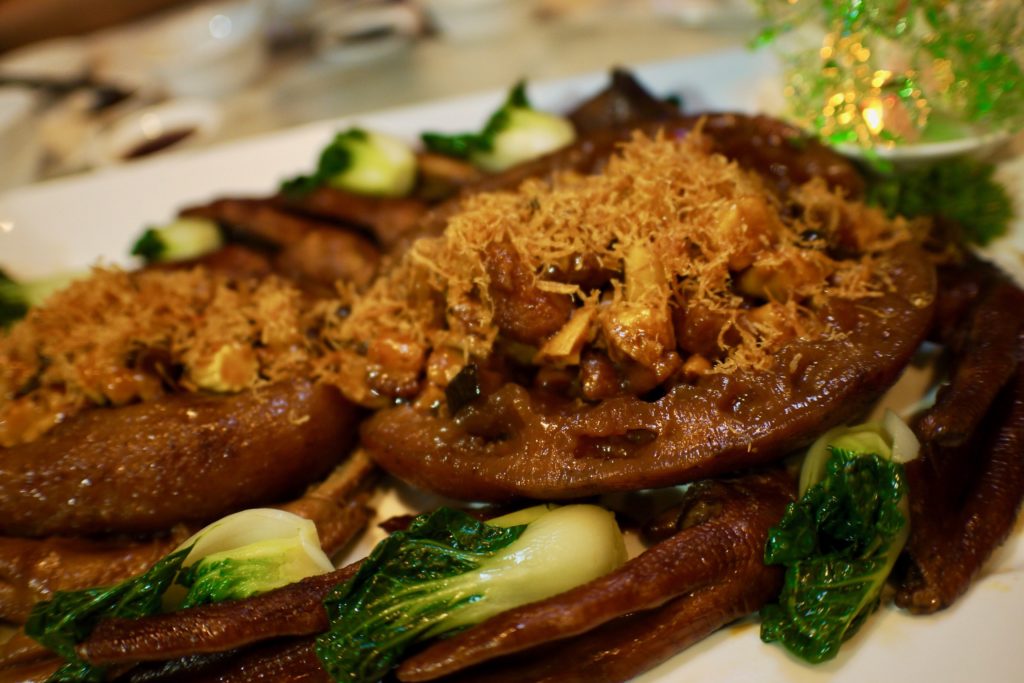
The fifth dish, a vegetable course, was the Stewed Sea Cucumber with Goose Feet 龍船鵝掌海參. Although taken as a vegetable course, this dish was served as a giant sea cucumber filled with pork crackling, different types of mushrooms, water chestnuts, and sprinkled with grated deep fried ginger. The marinated goose feet was particularly interesting, however, its rubbery texture may not be to everyone’s liking and is definitely for the more adventurous.
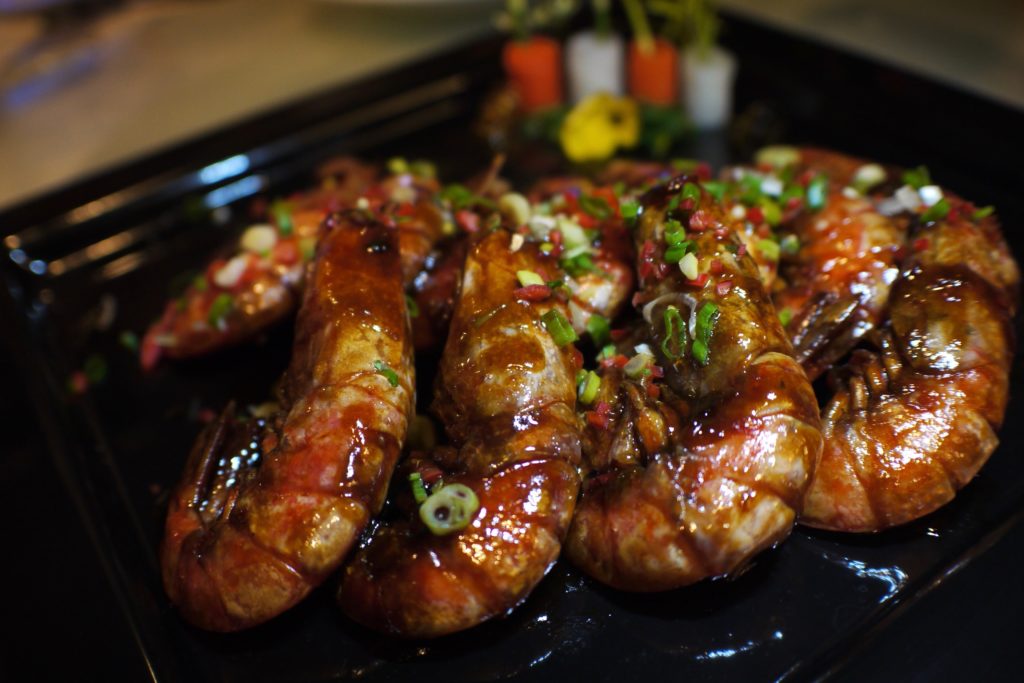
The sixth dish, a prawn course, was the Pan-Fried Marmite Prawns (乾煎媽蜜紅海蝦). Contrary to popular belief, there is little to almost no marmite used in this dish. It’s base is made from maltose and soy sauce, quite similar to how you would make a teriyaki. Some marmite is usually added, but the significant flavour actually comes from the soy and sugar used. The ones prepared here used large river prawns, which were very springy and lobster-like. The dish had the right amount of sweet, which can hardly go wrong.
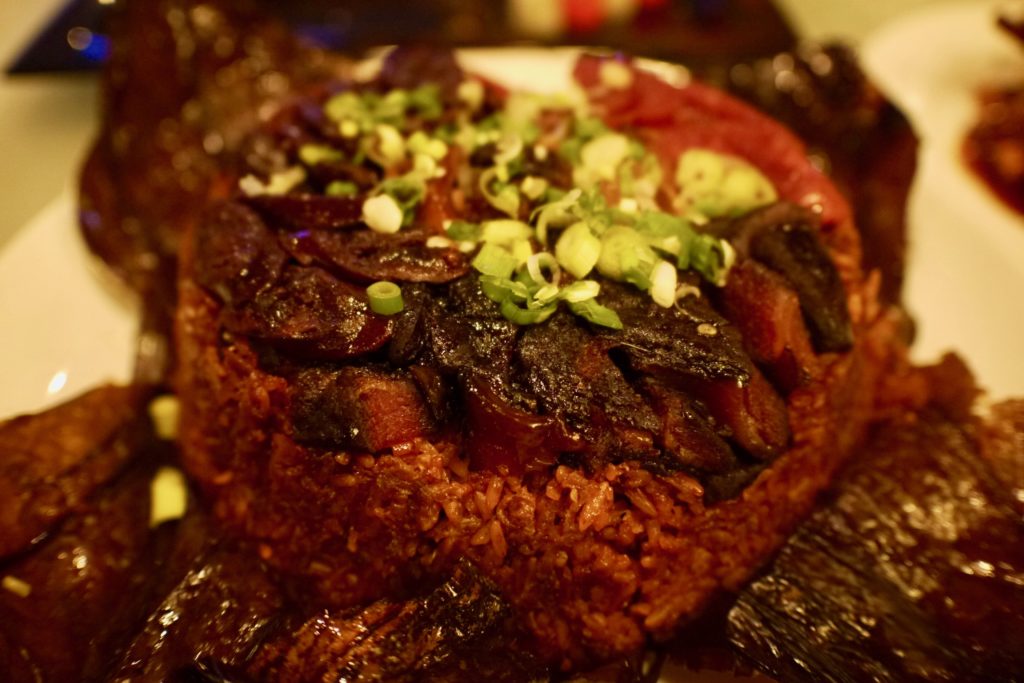
The seventh dish, a rice course, was the Golden Sweet Corn Fried Rice Waxed Meat (荷葉臘味扣香飯). This dish consisted of different types of waxed meats such as laap cheung (臘腸, Chinese sausage), yeun cheung (膶肠, Chinese liver sausage), laap ngaap (臘鴨, preserved duck) wrapped in lotus leaf. The waxed meats were very fresh and flavourful, with the meats still springy to the bite and not overtly dried. Fragrant and fantastic.
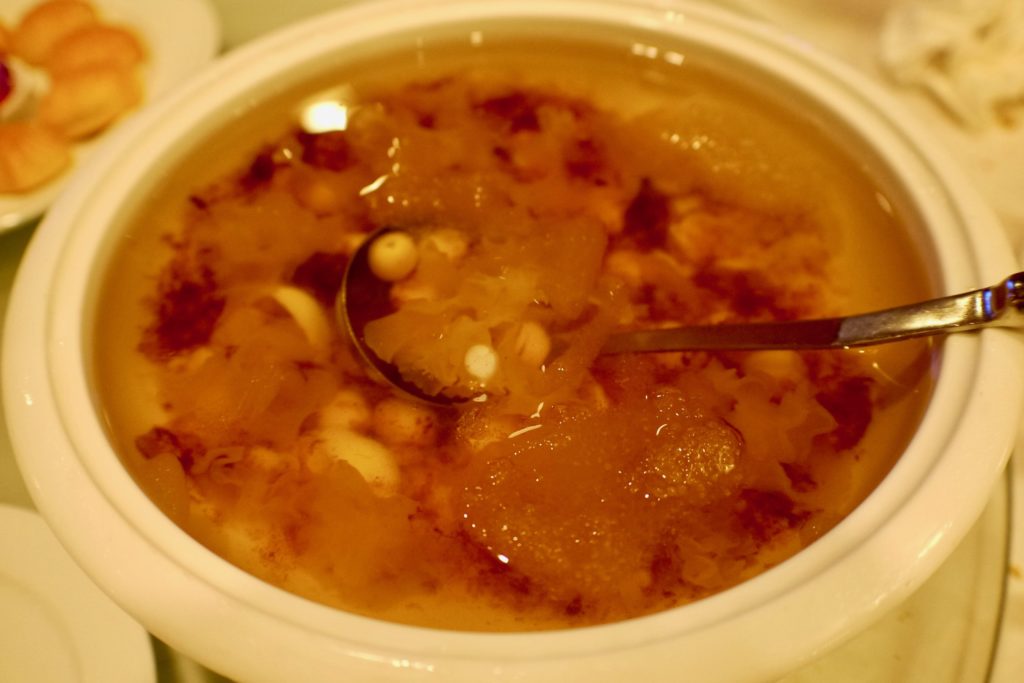
The eighth dish, a soup dessert course, was the Lotus Seed Soup (莲子羹). This Malaysian creation is a good example of simple and authentic Malaysian Cantonese desserts, simple, sweet and refreshing.
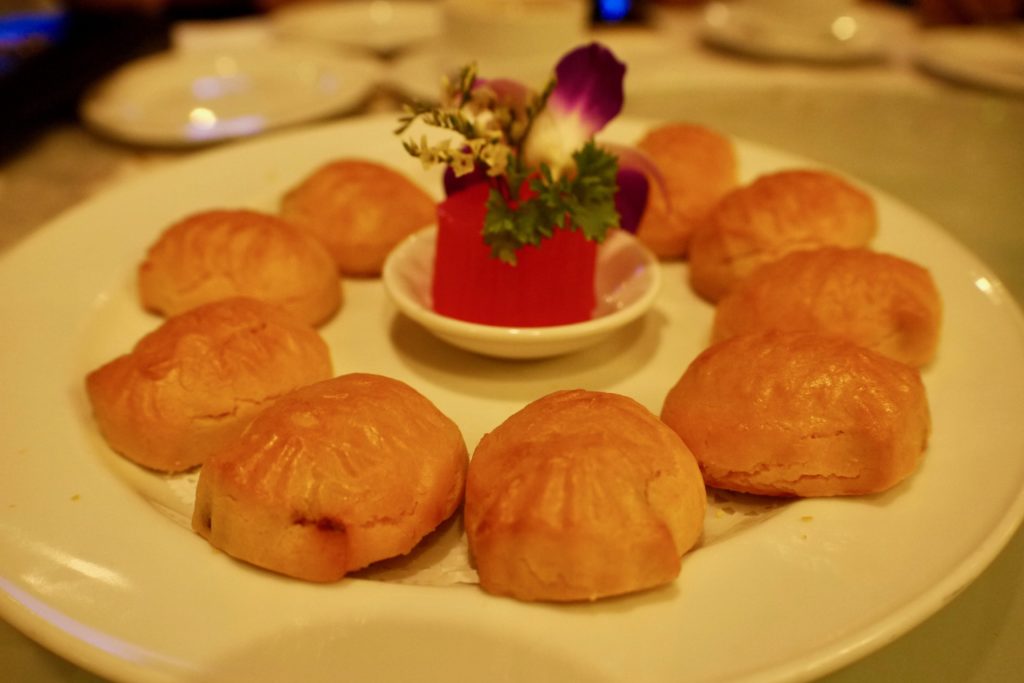
The ninth dish, a pastry dessert course, was the Pineapple Tarts (旺旺鳳梨酥). The pineapple tarts were very unique, which was a combination of the Malaysian pineapple tarts with an egg wash coating, but with the crumbly pastry of the Taiwanese pineapple tarts. A delectable combination that is a definite must try.
The Genting Palace Experience
One would normally not expect this level of quality dining when it comes to a holiday destination, as most restaurants would have catered to a more international palate. Genting Palace, however, keeps those very authentic flavours, which may be a tad strong for non-native tongues.
“We use high quality ingredients and make new dishes. We use strong flavours which give most of our loyal customers enjoy. This is why the dishes here are prepared with more heavy flavouring. Our customers can always inform us if they would prefer the dishes to be lighter, but in our opinion, should be eaten in its original recipe.”
The dishes are very flavourful and is very suited to the tastes of people from Guangzhou or Hong Kong as it is, after all, Cantonese cooking. The cuisine here is highly recommend for those who want a real experience of what Cantonese cuisine has to offer, and if you want something a little more delicate, do ask to speak to the chef, who will gladly oblige.
For our latest review, see Genting Palace 2019.
For a complete travel experience, see our Travel Guide: Things To Do In Genting Highlands.
2nd Floor, Genting Grand,
69000 Genting Highlands Resort,
Pahang,
Malaysia
+603 6101 1118
Opening Hours:
12.00 pm to 2.30 pm
6.00 pm to 9.30 pm
| PHOTOGRAPHY BY: NICHOLAS NG | WEBSITE: GENTING PALACE |